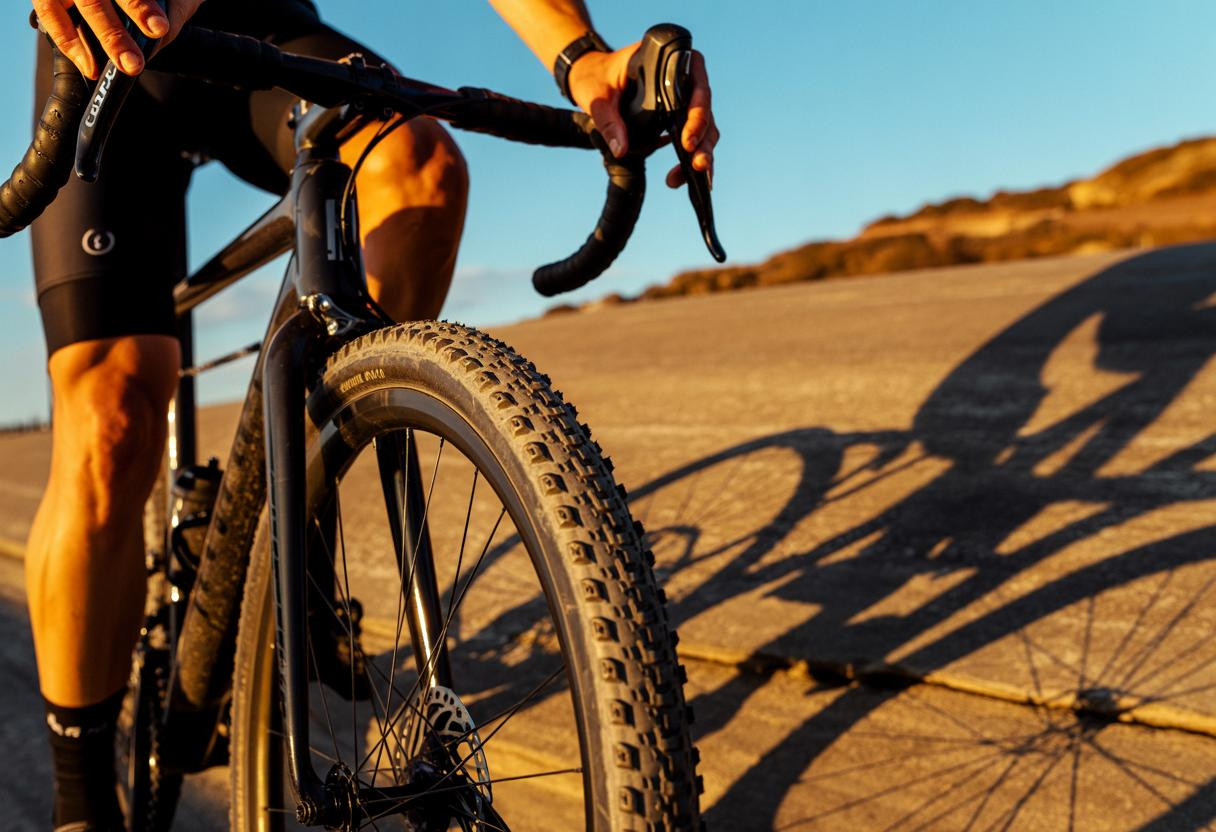When professional cyclist Lachlan Morton dropped his tire pressure to an unconventional 19 PSI for the grueling 350-mile Unbound Gravel XL, he wasn’t just making a technical adjustment—he was demonstrating a revolutionary approach to endurance cycling that weekend riders can apply to transform their own gravel adventures. This seemingly simple change in air pressure represents a fundamental shift in how we think about comfort, control, and performance on challenging terrain.
Morton’s decision to tackle the unsupported Unbound Gravel XL in 2025, after winning the 200-mile version in record time, showcases his evolution from pure competitor to experience-focused adventurer. The XL demands 20+ hours of solo riding through Kansas’s unforgiving Flint Hills, where every equipment choice becomes critical for survival and success.
The science behind ultra-low pressure performance
Running 19 PSI represents a dramatic departure from conventional gravel wisdom, where most riders operate between 36-65 PSI. This pressure revolution offers three distinct advantages that Morton leveraged for his ultra-endurance challenge. The increased tire contact patch provides superior traction on loose gravel, while the enhanced shock absorption reduces fatigue over hundreds of miles of rough terrain.
However, this approach requires tubeless tire systems and premium sealants to prevent catastrophic punctures. Morton’s professional setup likely includes reinforced tire casings and advanced sealing technology that amateur riders should consider before experimenting with such low pressures. The risk-reward calculation changes dramatically when you’re 200 miles from the nearest bike shop.
Equipment evolution driving innovation
The extreme demands of events like Unbound Gravel XL are accelerating technological advancement in cycling. Wide, reinforced tubeless tires now dominate the gravel scene, while integrated storage solutions and disc brake systems become essential for ultra-distance racing. Future innovations may include wilderness survival technology for endurance athletes like smarter power management systems and cross-disciplinary advances from mountain biking.
Psychological strategies that transcend tire pressure
Morton’s approach to the XL reveals a paradigm shift in competitive mindset. Rather than defending his 200-mile title, he chose to embrace uncertainty and prioritize the journey over results. This mental framework, emphasizing process over podiums, offers valuable lessons for amateur cyclists struggling with performance anxiety.
Professional ultra-endurance racing demands sophisticated ancient techniques for managing endurance stress including pacing strategies, resource management, and accepting isolation. Morton’s philosophy of “drowning out the hype” creates mental resilience that weekend riders can apply to their own challenging rides.
Practical applications for weekend warriors
Safe pressure experimentation guidelines
Amateur cyclists should approach low-pressure setups methodically. Start with moderate reductions from standard pressures (begin at 45-50 PSI for 40mm tires), ensuring proper tubeless setup and quality sealant. Test on familiar terrain before attempting challenging routes, and always carry repair supplies for pressure-related issues.
Skill development pathways
Morton’s success stems from years of progressive challenge-building. Weekend riders can adopt similar approaches through targeted training methods for physical preparation including bikepacking practice with minimal gear and varied terrain exposure to build handling confidence.
Industry transformation and cultural impact
The growing popularity of ultra-endurance gravel events is reshaping cycling culture, emphasizing adventure over pure competition. This shift influences product development, with manufacturers creating more versatile, rugged equipment designed for unsupported racing conditions. The democratization of adventure cycling encourages participation across skill levels while maintaining respect for the sport’s technical demands.
Lessons that extend beyond the gravel
Morton’s Unbound Gravel journey demonstrates that technical innovation and mental resilience work together to unlock new possibilities in endurance cycling. Whether you’re running 19 PSI through Kansas gravel or exploring local dirt roads, the principles of thoughtful equipment choices, progressive skill building, and embracing uncertainty create more rewarding cycling experiences that transcend simple performance metrics.
